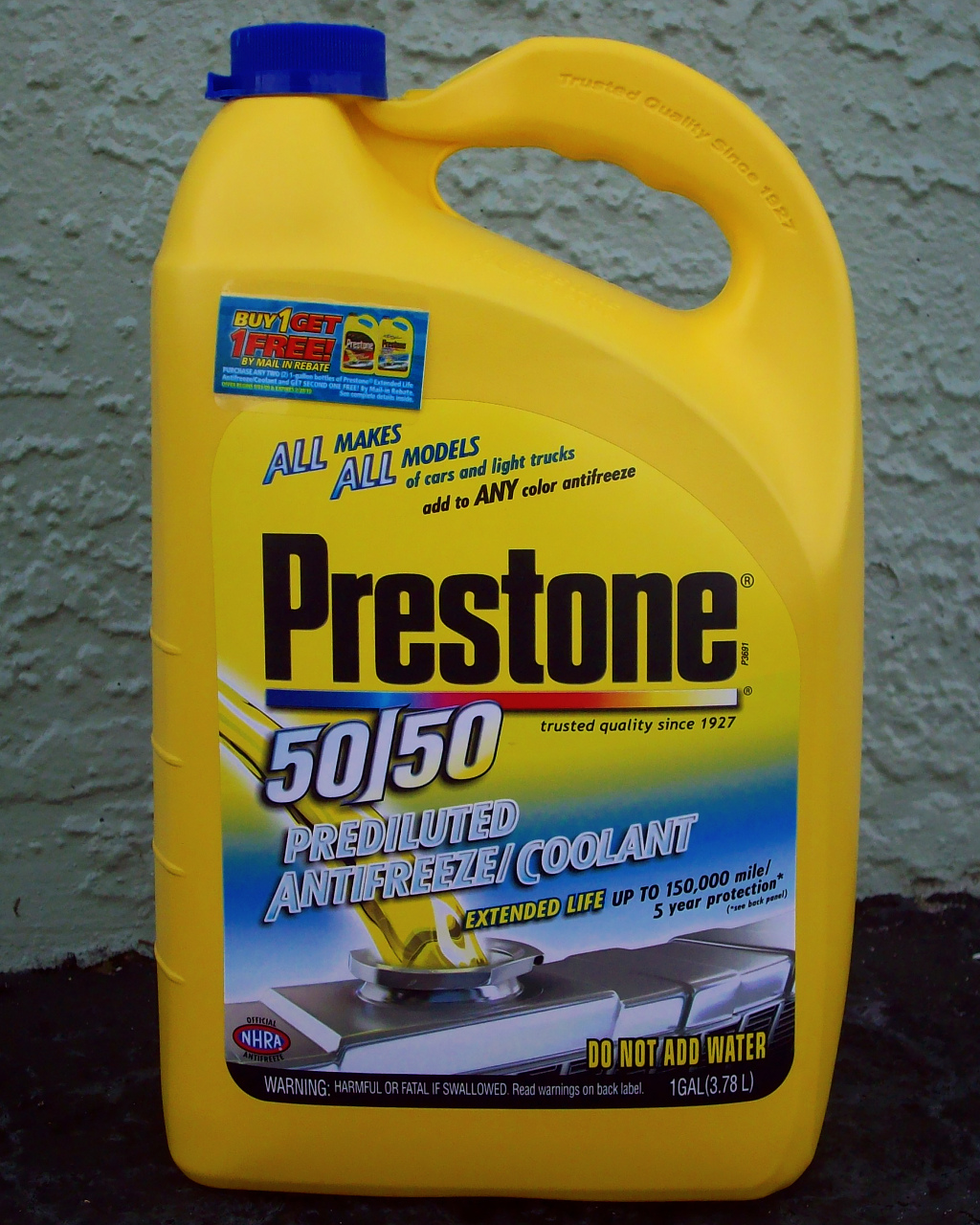[Antifreeze Warning] Often Not Treatable
Antifreeze Toxicity- What You Need to Know
With the onset of winter, the risk of antifreeze poisoning rises.
Recently a local politician had his cat die..he is calling for a ban on conventional antifreeze.
There is Non-Toxic antifreeze available, yet it is still difficult to find.
The brand is called Sierra.
Antifreeze poisoning is one of the most common and deadly toxicity seen in dogs and cats.
The toxic ingredient in antifreeze is ethylene glycol, ingestion of less than 2 ounces is potentially fatal for a 25 pound dog.
A cat only needs to lick 1/4 of an ounce.
Dogs and Cats are attracted to antifreeze spills by its sweet smell and taste.
When an animal swallows antifreeze, the ethylene glycol is rapidly absorbed into the bloodstream from the stomach.
After absorption, the ethylene glycol is changed into several other chemicals by an enzyme in the liver.
The substances produced by the liver’s metabolism of ethylene glycol are highly toxic to the animal’s kidneys, and can result in the death of kidney cells. If a high enough dose of ethylene glycol is consumed, fatal and irreversible kidney failure results.
SIGNS
Signs of antifreeze poisoning are neurologic in nature resulting from the direct effects of the ethylene glycol.
Affected pets may be lethargic, uncoordinated, and vomiting.
Owners often describe their pet as “acting drunk.”
These signs generally resolve within 12 hours after ingestion of the antifreeze, and the animal may have appeared to “recovered.” Signs of renal failure develop 24 to 48 hours after ingestion.
The pet will become very depressed, possibly even comatose. Seizures and vomiting may be seen.
TREATMENT
Treatment of antifreeze poisoning involves supporting kidney function with fluid therapy and administering medications that reduce the metabolism of ethylene glycol by the liver.
The key to successful treatment is early recognition.
Treatment must begin in the first few hours after the pet consumes the antifreeze in order to prevent the irreversible kidney failure from developing.
Unfortunately, most pets with antifreeze poisoning are not taken to a veterinarian until they have been “sick for a day or two.”
At that point, treatment may be unsuccessful.
It is essential to take your dog or cat to the veterinarian if you believe there is even a chance that he may have consumed antifreeze.
Don’t wait until he begins to act ill!
PREVENTION..
The bottom line with antifreeze poisoning is prevention.
When changing the coolant in your vehicle, clean up all antifreeze spills immediately.
Be sure the antifreeze container is securely closed and out of reach.
Address a leaking radiator immediately, before it causes the tragic death of a family pet.
Sierra is a relatively non-toxic antifreeze that contains propylene glycol rather than ethylene glycol.
Consider using this type of antifreeze if your pets have access to the areas where vehicles are stored.
Antifreeze may also be found in snow globes (the glass balls with water, snow and scenes inside).
Take extra care in making sure snow globes do not break where your pet has access to lick or consume the material found inside.
Best Wishes,
Dr Andrew Jones, DVM
P.S. For those of you who missed it, I recently held an info packed webinar on Dog Food: What to Feed, What to Avoid, Plus Food that can Heal your
Dog’s Health Problems
You can see it here:
